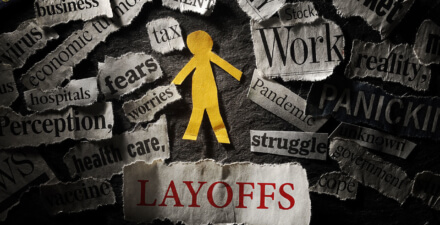Brad DeLong: Worthy reads on equitable growth, May 12-18, 2020
Worthy reads from Equitable Growth:
- Everyone knows that I have been a great fan of Trevon Logan since he showed up at Berkeley to go to graduate school. He has blossomed into a superb researcher, an impressive administrator, a gifted teacher, and a powerful intellectual voice here in America today. Go to Listen to him: in conversation with Liz Hipple, “Equitable Growth in Conversation with Trevon Logan,” in which they discuss: The reasons for the disparate health impacts of the coronavirus among black Americans. The historical legacies of structural inequalities in the United States. The economic inequalities faced by African Americans in the coronavirus recession. Policy recommendations to deal with the immediacy of the coronavirus recession. Policy recommendations to deal with historical structural inequalities to power a more equitable economic recovery. The historical legacy of intergenerational mobility, race, and segregation”
- Started by Equitable Growth alumnus Nick Bunker, the monthly JOLTS Day coverage—coverage of the release of the Bureau of Labor Statistics’ latest survey results on job openings and labor turnover—should be at the very top of the must-reads in your monthly must-read lists. These survey numbers are, of course, now two months stale, but they hint at the different world than we now live in. Read Kate Bahn and Carmen Sanchez Cumming, “JOLTS Day Graphs: March 2020 Report Edition,” in which they write: “The quits rate decreased sharply from 2.3 percent in February to 1.8 percent in March, as workers’ confidence about job prospects declined amid the public health crisis and requisite state shutdowns.”
- Successfully running a modern economy requires, on the political economy level, a well-functioning social insurance system. In lots of states we do not have a well-functioning social insurance system. Is centralizing functions at the federal level the solution? Before the age of Trump I would have said “yes.” Now I think, more and more, that administrative reform has to come state-by-state—the slow boring of hard boards. Read Alix Gould-Werth, “Fool Me Once: Investing in Unemployment Insurance systems to avoid the mistakes of the Great Recession during COVID-19,” in which she writes: “During the Great Recession of 2007–2009 and its aftermath, unemployed workers across the country struggled to access the unemployment benefits to which they were entitled, and our government—at both the state and federal levels—failed to remedy the systemic problems that prevent workers from accessing benefits and thus lead to personal financial hardship and a muted economic stimulus. In the early days of the coronavirus recession, we have seen the problems of the Great Recession echoed in the administrative failures of state Unemployment Insurance agencies. The current disarray in state unemployment benefits programs is neither a surprise nor an accident. It is the result of decades of conscious choices made by policymakers at the state and federal level.”
Worthy reads not from Equitable Growth:
- I would not say that Jay Powell’s actions as chair of the Federal Reserve during this crisis have been a surprise. He is a highly competent administrator with good social democratic American values, plus a keen sense of the public interest, of trade-offs, and of the necessity of marking your beliefs and actions to market. But I am very heartened by his actions. I think that when the dust settles, historians may classify him as the most effective, keen-sighted, and reality-based Federal Reserve chair to date. Yet all who are not experts deep in the weeds do not understand what he and his central bank have done and are doing. In order to find out, you need to be following the thoughtful and patient Nathan Tankus. Read his “The Federal Reserve’s Coronavirus Crisis Actions, Explained (Part 6),” in which he writes: “The most important announcement covered in this post is far and away the expansion of the Municipal Liquidity Facility … The Fed expanded the MLF … by lowering the population cutoffs. Now cities with a minimum of 250,000 residents and counties with a minimum of 500,000 residents can access the Municipal Liquidity Facility…The Federal Reserve announced that it was considering expanding the MLF to allow a limited number of governmental entities that issue bonds backed by their own revenue to participate directly in the MLF as eligible issuers. This opens the door to providing direct support to public universities … As if Monday’s announcement wasn’t enough, the Federal Reserve announced an expansion of the Main Street Lending Program … to include businesses with $5 billion in revenue and up to 15,000 employees (up from $2.5 billion and 10,000 maximum employees).”
- Right now COVID-19 is administering a disastrous health shock to the world. Following that is the less deadly but still important negative supply shock to our economies. Behind that is a manageable but as yet unmanaged knock-on domestic demand shock. And behind that is the rapidly-approaching international financial crisis with its global negative demand shock that, as of yet, nobody is seriously trying to manage. Read Barry Eichengreen, “Managing the Coming Global Debt Crisis,” in which he writes: “These countries’ private companies borrow in dollars … When it comes to the stabilizing use of monetary and fiscal policies, emerging markets are hamstrung. Which is why we are back to Baker Plan 2.0 … suspend[ing] interest payments … private creditors … roll[ing] over an additional $8 billion worth of commercial debt. That, at least, is something. But, to borrow the baseball apostle Yogi Berra’s line, it is also “déjà vu all over again.” The Baker Plan likewise proceeded on the premise that the shock was transient and that a temporary debt standstill would be enough … By 1989, seven unproductive years after the onset of the crisis, the Baker Plan finally was superseded by the Brady Plan … Debts were written down. Bank loans were converted into bonds—often a menu of securities from which investors selected their preferred terms and maturities. Advanced-economy governments facilitated the transaction by providing “sweeteners” … Today’s crisis is also being treated as temporary, with a moratorium on interest payments and a promise of commercial credits remaining valid only through the end of the year. The reality is different. Weak global growth and depressed primary commodity prices will persist. Supply chains will be reorganized and shortened, auguring further disruptions of trade. Receipts from tourism and remittances will not pick up anytime soon. And unless the debt overhang is addressed, capital flows will not resume.”
- There seems to be one big piece of good news in the fight against COVID-19: The battle to keep the caseload low enough that hospitals do not collapse and the death rate rise from 1 percent to 4 percent appears to have been won, worldwide. Now there is a second battle: to push the bulk of the potential caseloads out beyond the date at which an effective vaccine arrives and so reduce the global death toll from its likely non-vaccine value of 50 million to a small fraction of that. That battle can be lost. That battle can be won expensively, through prolonged and expensive social distancing and other measures. That battle can be won quickly and cheaply, by sharp, short-term massive virus repression, followed by controlling re-emergences via large scale and frequent trace-&-test-&-isolate. Sane, intelligent, and competent national governments are engaged in that last option, and it looks like many of them will succeed. The Trump administration is not among them. Read Matthew Yglesias, “Flattening the curve is not good enough,” in which he writes: “With the disease seemingly beaten back domestically, Hong Kong is now in a position to start switching emphasis to a strategy focused on border controls … The city has a clearly articulated strategy that it calls “suppress and lift” [to] ease restrictions now when cases are at zero, but then clamp back down as necessary to push cases back down if they pop up. Taiwan has also had no new cases for several days … New Zealand has not done quite this well, but the government believes it has successfully identified and isolated all of the country’s coronavirus cases and is lifting restrictions, on the claim that the virus has been “eliminated” in the country. South Korea’s outbreak is now down to single-digit numbers of new cases per week … The United States, meanwhile, is moving to open up on the basis of a vaguely articulated assumption that settling for mitigation is good enough … The United States has not really tried the strategies that have made suppression successful. To accomplish that, America would need to invest in expanding the volume of tests, invest in more contact tracers, and create centralized quarantine facilities … But doing so would save potentially tens or hundreds of thousands of lives and almost certainly lead to a better economic outcome by allowing activity to truly restart.”







